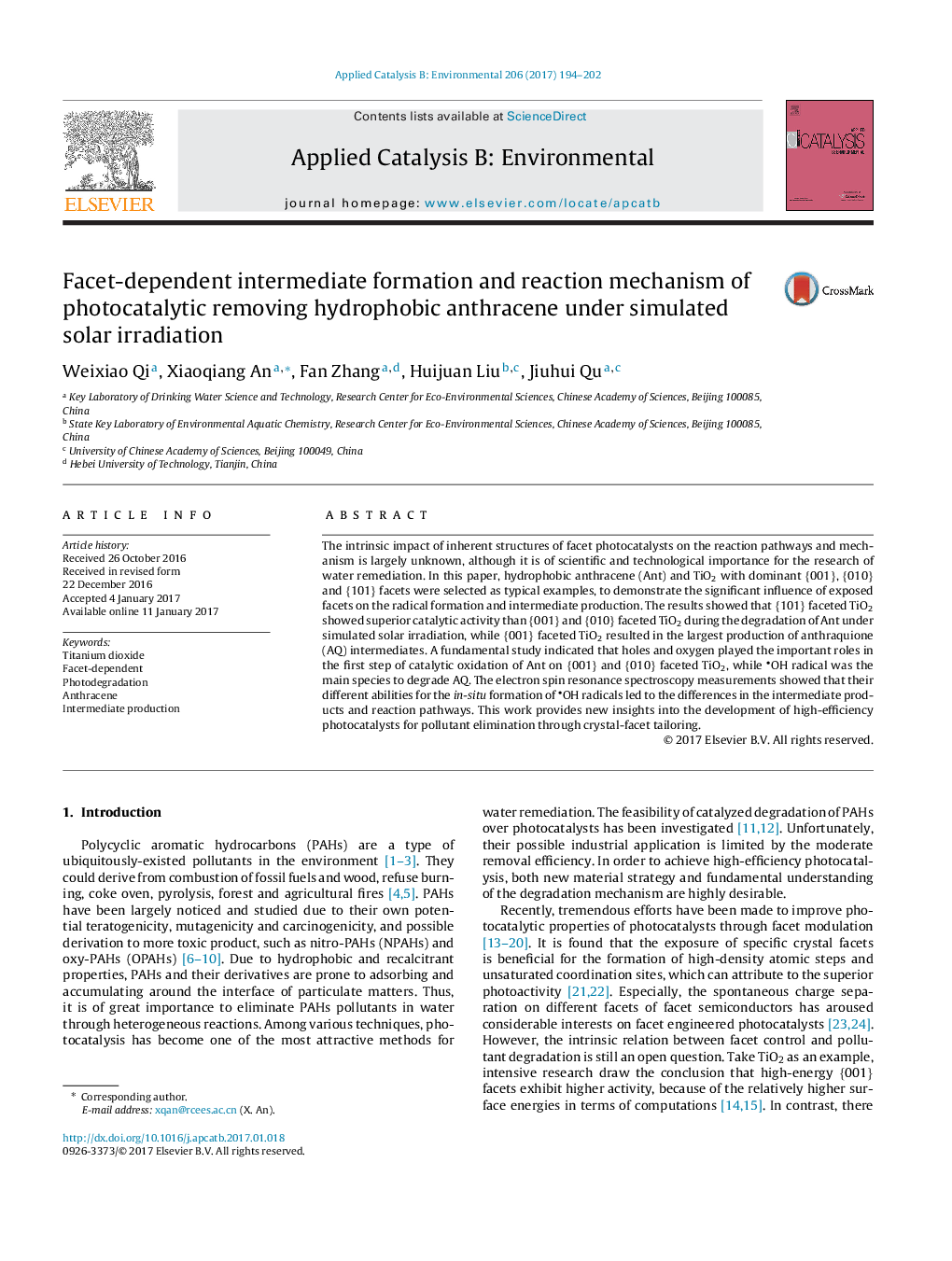| Article ID | Journal | Published Year | Pages | File Type |
|---|---|---|---|---|
| 6454664 | Applied Catalysis B: Environmental | 2017 | 9 Pages |
â¢{101} faceted TiO2 showed superior catalytic activity on anthracene removal.â¢{001} faceted TiO2 resulted in the largest production of anthraquione intermediate.â¢Oxygen and h+ played the important roles in the first step of catalytic reaction.â¢OH radical was the main species to degrade anthraquione further.
The intrinsic impact of inherent structures of facet photocatalysts on the reaction pathways and mechanism is largely unknown, although it is of scientific and technological importance for the research of water remediation. In this paper, hydrophobic anthracene (Ant) and TiO2 with dominant {001}, {010} and {101} facets were selected as typical examples, to demonstrate the significant influence of exposed facets on the radical formation and intermediate production. The results showed that {101} faceted TiO2 showed superior catalytic activity than {001} and {010} faceted TiO2 during the degradation of Ant under simulated solar irradiation, while {001} faceted TiO2 resulted in the largest production of anthraquione (AQ) intermediates. A fundamental study indicated that holes and oxygen played the important roles in the first step of catalytic oxidation of Ant on {001} and {010} faceted TiO2, while OH radical was the main species to degrade AQ. The electron spin resonance spectroscopy measurements showed that their different abilities for the in-situ formation of OH radicals led to the differences in the intermediate products and reaction pathways. This work provides new insights into the development of high-efficiency photocatalysts for pollutant elimination through crystal-facet tailoring.
Graphical abstractDownload high-res image (140KB)Download full-size image
